Beer Day, or "Bjórdagurinn" is celebrated in Iceland ever year on March 1st in recognition of the end of 74 years of prohibition on the sales of beer. Originally the law, passed by a public referendum, went into effect on January 1, 1915 and banned all alcoholic drinks.
The complete ban was partially lifted to allow the sale of wines due to economic pressure from Spain in 1921, which refused to buy any of Iceland's main export, fish, unless Iceland bought Spanish wines. Another vote in 1935 lifted the ban on spirits, but strong beer was not included in the vote to please the temperance lobby, which believed that since beer was cheaper than hard liquor, it's consumption would be greater and lead to more drunkenness and depravity.
Beer Day arrived on this date in 1989, after a nationally televised live 13-8 vote in Iceland's Parliament, and was celebrated by crowds despite the 14º F temperatures for their first taste of real beer. The day went without incident, despite predictions to the contrary.
The number of liquor licenses in Reykjavik rose by 47% the first year and total alcohol consumption rose by 23%, with the most popular brands of beer being Viking followed by Thule.
In a country ranked #1 in economic opportunity and quality of life, it doesn't get any better than Beer Day, as the country with the longest work week in Europe lets down it's hair and samples a variety of different brews as celebrations are held in pubs, restaurants and clubs, continuing long into the night.
While team handball is considered to be the national sport of Iceland, having won the silver medal at the 2008 Olympics in Beijing, soccer is also popular.
Hockey in Iceland was first played around 1950, but artificial ice did not arrive until 1987 and the first of three indoor rinks not until 1997. While there is a hockey league in Iceland, it only consists of three clubs, Skautafélag Akureyrar in Akureyri in the north and Skautafélag Reykjavikur and Björninn in Reykjavik, who play a season of 12 games each plus playoffs.
The most famous group of Icelandic hockey players were immigrants to Canada, who were discriminated against by the Canadians. Having taken up the game of hockey, they were forced to establish their own teams within the Icelandic community in Manitoba. In 1909 they established a single club, the Falcon Hockey Club, and a new league, the Manitoba Independent League, which included teams not allowed into the established Winnipeg City League.
The City League responded by allowing the best teams from the MIL into the WCL to diminish the upstart league. The Winnipeg Falcons would persist, and applied to participate in the Canadian Amateur Championship for the Allan Cup, awarded to the senior men's champions of Canada. After being repeatedly rejected, they were finally admitted in 1919-20 and won the championship in their first try, earning the right to represent all of Canada in the 1920 Olympics, the first appearance of ice hockey at the Olympics.
The Falcons defeated Czechoslovakia 15-0 in the quarterfinals, the United States 2-0 in the semifinals and easily handled Sweden 12-1 to become the first Olympic hockey champions with a team made up of Icelandic players.
The Iceland National Hockey Team is currently ranked 37th in the world out of the 48 ranked nations and has 64 registered senior male players. They played their first international game at the senior level on April 14, 1999 at the lowest rung of the IIHF ladder system, Pool D.
Iceland U18 National Team
Iceland hosted the Pool D championships in 2000, placing 5th of the 9 teams. With the reorganization of the system, Iceland was now in Division II in 2002, where they finished 5th and then 6th in 2003 and were placed in then newly created Division III for 2004, where they won promotion to Division II with a 3-0-1 record, which included a 30-0 win over Armenia.
They finished 6th and last in 2005, dropping back down to Division III for 2006, where they once more earned a promotion back to Division II with a 4-0 record. They finished 4th for their highest finish in the history of the program to maintain their place in Division II, where they finished 5th in 2008 and 2009.
The team is primarily made up of players from the three clubs in Iceland, but the 2009 team did have three players who were playing outside of Iceland, one in Norway and two in Sweden, a sign of progress for the Icelandic hockey community.
Iceland also competes at the Division III level of the men's U20 Junior Championships and Division II of the U18 Junior Championships, and has 467 registered junior players, a sign that the growth of Icelandic hockey is well underway.
The logo for Ice Hockey Iceland tells an interesting story, featuring the Icelandic Falcon, the largest wild Falcon in the world. The white represents a glacier and the bottom is fire, to represent a volcanic eruption, which is in the shape of a maple leaf to honor the Winnipeg Falcons, the 1920 Olympic hockey champions who were of Icelandic decent.
Today's featured jersey is a Nike 1998 Iceland National Team Hallur jersey worn in the U20 Junior Championships and features the IIHF 90th Anniversary patch worn in 1998 in the various IIHF championships that year. The name is sewn on twill, while the numbers are heat sealed onto the jersey.
While Iceland is not at the level of the World Rankings that we normally limit our collection of international jerseys to, this highly attractive jersey, especially with the addition of the anniversary patch, was just too nice to pass up and is one of the most unique jerseys in the Third String Goalie Collection.
As one would expect, footage of the Iceland National Team is not the easiest thing to come by, but we think we have managed to assemble some items of interest for you in today's video section.
But wait! Check this out, Greece taking on Iceland in the 1999 World Championships in Division III. Youtube totally rocks.
Good seats still available by the way. Be sure not to miss Mr. Chest Hair and Gold Chains at the 3:14 mark. We suspect he's a supporter of Greece for some reason...
A commercial for Thule beer and a history lesson on the Cod War. Who knew a beer commercial could be so educational?
Apparently they drink more than beer in Iceland, as proven by this commercial.
Speaking of lessons, here is an introduction to the Icelandic language with the lovely Natalja.
Finally, our favorite Icelandic export, Lazy Town!
Dasherboard: The 2010 Olympic tournament concluded yesterday with an exciting contest played at a very high level. It seemed like any and every mistake resulted in a shot on goal against the team making the error.
Things seemed to be going well for the United States as they got past the first five minutes without allowing a goal and letting the Canadian crowd get fully energized. Canada was able to finally get the critical first goal of the game at the 12:50 mark of the first period when Jonathan Toews got the puck after the US turned the puck over deep in their own zone.
Canada added to their lead 7:13 into the second when Cory Perry fired in a deflected centering pass to make it 2-0 for the hosts. Ryan Kesler answered for the United States with a deflection of a Patrick Kane shot to get the Americans on the scoreboard. Both teams had several good scoring chances but both goalies stood tall, with Ryan Miller of the USA in particular being aided by several great plays by his defense to thwart good scoring chances and keep the game close as the period ended with the shots at 25-23 in favor of Canada.
The third period was played penalty free, as the officials let them play, avoiding any of the marginal calls we have seen earlier in the tournament. With time running out and Miller out of the US goal for an extra attacker, Patrick Kane threw a puck into the slot where it deflected off of Jamie Langenbrunner's skate to Roberto Luongo, who could not freeze the puck. Zack Parise, who had gotten in behind the Canadian defense, pounced on the loose puck and fired it past Luongo with 25 seconds remaining to send the game into overtime.
Played four on four, the overtime produced scoring chances on both ends before a shot on Miller was deflected into the corner.
Sidney Crosby got to the puck along the boards and passed it forwards to
Jarome Iginla, who passed it back to Crosby, who was now heading for the goal, having gotten a step on
Brian Rafalski, who quite nearly deflected the pass. Crosby received the puck and shot it as quickly as he could, sending it between Miller's legs for the gold medal winning shot and putting him up there with the likes of
Paul Henderson when it comes to the all time clutch goals in Canadian hockey history.
While the United States players were clearly disappointed to receive silver medals, the US did themselves proud with a very young team, punching above their weight and mixing it up with the favored teams. They finished the tournament 5-1, having defeated Switzerland, Norway, Canada in the most thrilling game of the tournament, and Switzerland again before destroying Finland in 13 minutes to reach the gold medal final. There, they took the Canadians to overtime before finally losing by a single goal.
The soap opera that is Team Canada began as expected, with a dominant 8-0 win over Norway. The first signs of drama came in game two, as Switzerland took the Canadians all the way to a shootout before The Golden Child Crosby won the game for Canada, inviting the usual hand wringing, scrutiny and over-analysis, which only intensified after a breathtaking 5-3 loss to the United States in the one thing that the Canadian public expects Canada to do better at than the United States, aside from producing brilliant comedians, with the noted exception of
Martin Short.
By failing to earn one of the coveted byes, Canada was forced to play an additional game to advance to the quarterfinals, which actually worked in their favor, as they were given the opportunity to regain their confidence and swagger by pummeling Germany 8-2.
Back on top of their game, everyone was anticipating a cracker of a game against traditional rivals Russia, only someone forgot to tell Russia to give a damn, as Evgeni Nabokov missed his wake up call, and Canada led 6-1 before Nabokov awoke from his nightmare. Canada would eventually advance with a 7-3 victory.
The Canadian freight train would come back to reality after nearly letting a 3-0 lead over Slovakia slip away in the third, and only a Pavol Demitra shot off the crossbar in the final seconds would preserve the Canadian victory and a rematch with the Americans.
Similar to their 2002 Olympics, Team Canada took the long road, stumbling in the group stage and having to endure the questions and doubts of a nation, before pulling it all together when the elimination games arrived and the games truly mattered.
Their gold medal was a fitting finale to the wonderful Olympics that Canada and Vancouver staged and certainly created many memories, as well as adding another chapter in the already charmed life of one Sidney Patrick Crosby.
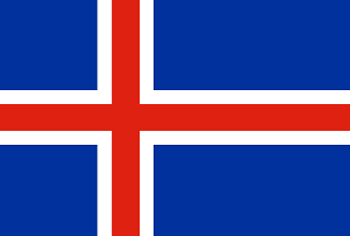
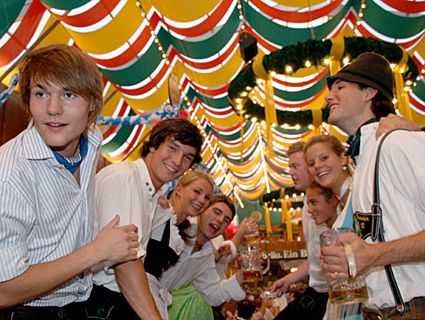

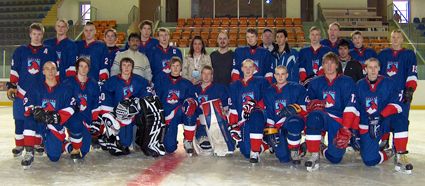

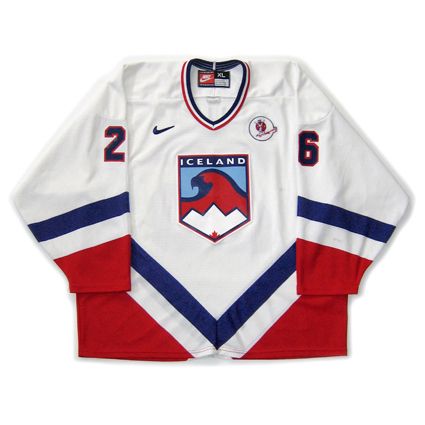
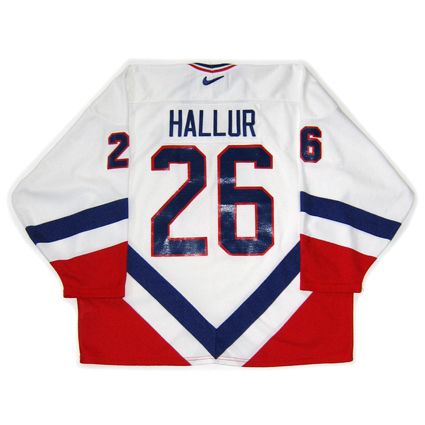
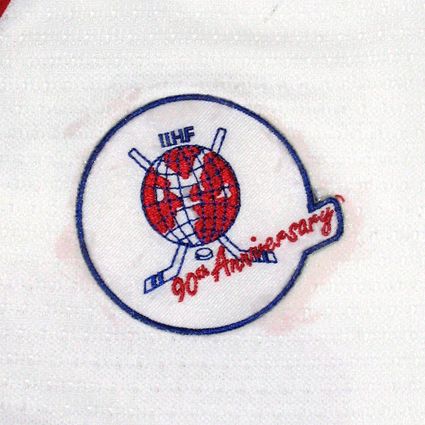










Everyone knows that Bjork is iceland's #1 export. Lazytown is #2 and Volcanic Ash is #3.
ReplyDelete